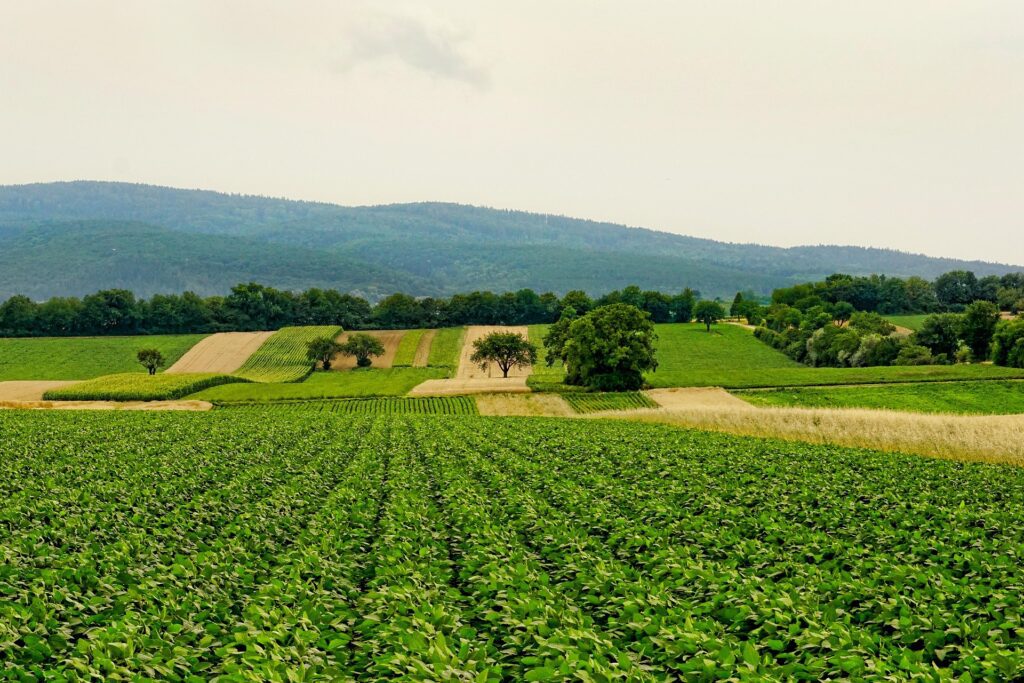Table of Contents
Introduction
Community Supported Agriculture (CSA) has emerged as a transformative model in the food industry, bridging the gap between consumers and local farmers. This innovative approach not only provides fresh, seasonal produce but also fosters a sense of community and sustainability. In this blog, we will explore how CSA can be a key driver for personal and professional success, benefiting individuals and communities alike.Community supported agriculture
I. Understanding Community Supported Agriculture
A. Historical Context
Community Supported Agriculture (CSA) has its roots deeply embedded in the historical and social fabric of agriculture, particularly in the context of sustainable practices and community engagement. While the modern CSA model is often attributed to developments in the 1980s in the United States, its origins are more complex and can be traced back to various movements and influential figures, particularly within marginalized communities.Community supported agriculture
Early Beginnings and Global Influences
The concept of CSA is not unique to the United States; it has international origins that reflect a global response to industrialized agriculture. In Japan, for instance, CSA-like initiatives began in the early 1970s, led by Teruo Ichiraku, who emphasized the importance of consumer involvement in agriculture. This model aimed to create a direct relationship between farmers and consumers, ensuring that local agricultural practices could thrive amidst the encroachment of industrial farming.Community supported agriculture
In Europe, particularly Switzerland, the seeds for CSA were sown with collective agricultural movements inspired by social justice ideals. The producer-consumer alliance known as Les Jardins de Cocagne was established in 1978 as a response to these needs. This model emphasized community support for local farmers and laid the groundwork for similar initiatives in North America.Community supported agriculture

The Role of African American Farmers
While many narratives about CSA focus on its European roots, it is essential to recognize the significant contributions of Black farmers in the United States. Dr. Booker T. Whatley, an influential figure at Tuskegee University, played a crucial role in developing what would become foundational principles of CSA during the 1960s. Dr. Whatley advocated for regenerative agriculture and direct marketing strategies that would empower small farmers, particularly those from marginalized backgrounds.
Dr. Whatley’s “clientele membership clubs” are considered precursors to modern CSAs. These clubs allowed consumers to pay upfront for their produce at the beginning of the growing season, providing farmers with financial stability and a guaranteed market for their crops. This model not only supported local economies but also fostered community ties between farmers and consumers.Community supported agriculture
The Emergence of CSA in North America
The modern CSA movement began to take shape in North America during the mid-1980s. Two farms are often credited with popularizing CSA: Indian Line Farm in Massachusetts and Temple-Wilton Community Farm in New Hampshire, both founded in 1986 by individuals influenced by European models and biodynamic farming principles.Community supported agriculture
Robyn Van En, who founded Indian Line Farm, played a pivotal role in articulating the CSA concept through her pamphlet “Basic Formula to Create Community Supported Agriculture,” published shortly after her farm’s inception. This document helped disseminate knowledge about CSAs across North America and led to the establishment of CSA North America as a nonprofit organization dedicated to supporting these initiatives.Community supported agriculture
Cultural and Social Implications
The rise of CSAs coincided with broader social movements advocating for sustainable agriculture, environmental stewardship, and food justice. The 1980s saw a growing awareness of the negative impacts of industrial farming practices on health and the environment. CSAs emerged as a grassroots response to these challenges, emphasizing local food systems that prioritize ecological balance and community well-being.
Moreover, CSAs have been instrumental in addressing issues related to food access and equity. Many contemporary CSAs actively seek to include diverse communities by offering sliding scale pricing or subsidized shares for low-income families. This commitment to inclusivity reflects a growing recognition of historical injustices within agricultural systems and aims to rectify disparities in food access.
B. How CSAs Work
Community Supported Agriculture (CSA) is a dynamic model that connects consumers directly with local farmers, allowing them to share in the risks and rewards of agricultural production. This system has gained popularity as a sustainable alternative to conventional food distribution methods. Below is a detailed exploration of how CSAs work, including their structure, organization, and various operational models.
Overview of Community Supported Agriculture
At its core, CSA is a partnership between farmers and consumers. Members of the community pledge their support to a farm operation by purchasing a membership or “share” before the growing season begins. In return, they receive regular deliveries of fresh produce and other farm products throughout the season. This model not only provides financial support to farmers but also fosters a deeper connection between consumers and the source of their food.
Structure and Organization of CSAs
Types of CSA Organizations
- Farmer-run CSA: This is the most common model where the farmer actively manages all aspects of production, including hiring labor and overseeing distribution. The farmer is responsible for crop planning, field activities, and engaging with members.
- Community-run CSA: In this model, the community initiates the CSA and hires a grower to produce crops. The community members organize distribution and outreach efforts, often leading to a more engaged membership.
- Shared management CSA: This type involves collaboration between farmers and community members who participate in administration, outreach, distribution, and some farm labor. It allows for shared responsibilities and decision-making.


Roles and Responsibilities in CSAs
- Farmer/Operator: Manages agricultural production, including crop planning and daily field activities.
- CSA Manager: Handles public relations, share distribution, billing, membership recruitment, and coordination of special events.
- Field Crew/Labor: Engages in hands-on farm work such as planting, irrigation, harvesting, and distribution.
- Core Group: Comprises 5–12 members including farmers and shareholders who assist with administrative tasks, event planning, legal issues, and outreach efforts.
How CSAs Function
Membership Structure
Members typically purchase shares at the beginning of the growing season. The cost can vary based on factors such as the size of the share and the types of products offered. Membership may also include options for work-share arrangements where members contribute labor on the farm in exchange for reduced fees.
Distribution Models
CSAs utilize various distribution methods to deliver products to members:
- On-farm Pickup: Members visit the farm to collect their shares directly.
- Local Distribution Sites: Shares are delivered to designated locations within the community for pickup.
- Home Delivery: Some CSAs offer home delivery services for added convenience.
Each delivery typically includes a variety of seasonal produce that reflects what is currently being harvested on the farm.
Variations in CSA Models
CSAs can take many forms depending on consumer preferences and local agricultural practices:
- Mixed Vegetable CSA: The most common type providing a diverse array of seasonal vegetables.
- Fruit and Vegetable CSA: Includes both fruits grown on-site or sourced from other local growers.
- Grains, Beans, Seeds CSA: Offers unique varieties of grains or legumes as part of their shares.
- Meat and Dairy CSAs: Some CSAs partner with local livestock producers to provide meat and dairy products alongside vegetables.
- Multi-farm CSAs: Collaborations between multiple farms allow for a broader range of products by pooling resources.
Benefits of Participating in a CSA
- For Consumers:
- Access to fresh, high-quality produce.
- A sense of connection with local agriculture.
- Opportunities for education about sustainable farming practices.
- For Farmers:
- Financial stability through upfront payments.
- Reduced marketing burdens as they have committed customers.
- Direct feedback from consumers that can enhance production practices.
Challenges Faced by CSAs
While CSAs offer numerous benefits, they also face challenges such as:
- Member Commitment: Ensuring that members remain engaged throughout the season can be difficult.
- Weather Dependence: Crop yields can be affected by adverse weather conditions, impacting what members receive.
- Logistical Issues: Coordinating distribution efficiently requires significant planning and organization.


II. Benefits of Community Supported Agriculture
A. For Consumers
- Access to Fresh, Seasonal Produce: One of the most significant advantages of joining a CSA is the access to fresh, locally grown produce. Members receive weekly or bi-weekly deliveries of seasonal fruits and vegetables, often harvested just hours before distribution.
- Improved Dietary Habits: With a steady supply of fresh produce, CSA members are more likely to incorporate fruits and vegetables into their diets, leading to healthier eating habits.
- Strengthening Local Food Systems: By supporting local farms through CSA memberships, consumers contribute to the local economy and help create a resilient food system that reduces reliance on industrial agriculture.
B. For Farmers
- Financial Stability: CSAs provide farmers with upfront payments that help cover costs before the harvest season begins. This financial security allows them to plan better and invest in sustainable practices.
- Reduced Marketing Pressures: With a committed customer base through CSA subscriptions, farmers can focus more on cultivation rather than marketing their produce.
- Building Direct Relationships with Consumers: CSAs foster direct connections between farmers and consumers, allowing farmers to share their stories and practices while receiving immediate feedback from their customers.
III. The Role of CSA in Personal Development
A. Community Engagement
CSAs create opportunities for consumers to engage directly with their local farms. Many CSAs offer farm tours, volunteer days, and community events where members can participate in planting, harvesting, or other farm activities. This engagement fosters a sense of belonging and strengthens community ties.
B. Educational Aspects
Participating in a CSA often comes with educational components such as newsletters or workshops that provide information about sustainable farming practices, cooking tips, and seasonal recipes. These resources empower members to make informed choices about their food while promoting environmental awareness.
IV. Professional Growth Through CSA Involvement
A. Networking Opportunities
Joining a CSA opens doors for networking with local farmers, producers, and fellow members who share similar values regarding sustainability and community support. This network can lead to collaborations on projects or business ventures that align with individual passions.
B. Skill Development
Involvement in CSAs can also enhance practical skills such as gardening, cooking, business management, and marketing. Many CSAs welcome volunteers for various tasks, providing hands-on experience that can be valuable for personal growth or career development in agriculture or related fields.


V. Challenges and Considerations in CSA Participation
A. Potential Barriers
- Accessibility Issues: Some individuals may face challenges accessing CSAs due to location or cost barriers. Urban areas may have limited options for local farms, while rural consumers may struggle with transportation.
- Commitment Levels Required from Participants: Participating in a CSA requires commitment from members regarding payment schedules and picking up shares regularly.
B. Solutions and Innovations
- Flexible Payment Options: Many CSAs are now offering flexible payment plans or sliding scale prices to accommodate diverse consumer needs.
- Technological Advancements: Online platforms have emerged that connect consumers with local farms, making it easier for individuals to find CSAs that suit their preferences.
VI. Future of Community Supported Agriculture
A. Trends in CSA Models
The landscape of CSAs is evolving with trends such as subscription boxes that cater to specific dietary preferences (e.g., vegan or gluten-free) or partnerships with local markets to broaden reach.
B. Long-term Impact on Communities
CSAs contribute significantly to building sustainable food systems by promoting biodiversity and reducing carbon footprints associated with long-distance food transport.
Conclusion
Community Supported Agriculture is more than just a method for acquiring fresh produce; it is a powerful movement that fosters personal growth, professional development, and community resilience. By participating in CSAs, individuals not only support local farmers but also enrich their lives through meaningful connections and sustainable practices.
This detailed expansion provides you with a robust framework for your blog post on Community Supported Agriculture (CSA). You can further elaborate on each section by adding personal anecdotes, case studies from successful CSAs, interviews with farmers or participants, statistical data about health benefits or economic impacts, recipes using seasonal produce from CSAs, etc., to reach your target word count while keeping the content engaging and informative!